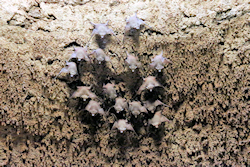Sudan
Nature
Sudan is dominated by the River Nile and its tributaries. The terrain is generally flat plains, broken by
several mountain ranges; in the east are the Red Sea Hills.
In the North there is the very dry Nubian Desert. Sudanís rainy season lasts for about three months (July to
September). The dry regions are plagued by sand storms, known as haboob, which can completely block out the sun.
In the northern and western semi-desert areas, people rely on the scant rainfall for basic agriculture and many are
nomadic, traveling with their herds of sheep and camels.
Nearer the River Nile, there are well-irrigated farms growing cash crops.
There are several dams on the Blue and White Niles. Among them are the Sennar and Roseires on the Blue Nile, and
Jebel Aulia dam on the White Nile. There is also Lake Nubia on the Sudan-Egyptian border.
On my trip to the northern part off Sudan, i also did manage to get pictures off the nature off this area
Underneath you can find pictures and listings off the species i have seen.
Birds:
The avifauna of Sudan includes a total of 1.013 species, of which 3 are endemic, 1 has been introduced
by humans, and 4 are rare or accidental. 10 species are globally threatened.
Here is a list of the species i have seen.
Plants:
An estimated 52 percent of Sudanís territory is made up of savanna, shrubland and grassland, with an
additional 42 percent covered by sparse or barren vegetation where plants cover no more than 10 percent of
the land.
The Royal Botanic Gardens at Kew in London estimates that Sudan has between 4,000 and 4,500 plant species.
Here is a list of the species i have seen.
Others:
There are 287 mammal species in Sudan, of which 3 are critically endangered, 5 are endangered, 11 are
vulnerable, and 9 are near-threatened.
About 341 butterfly-species are known from Sudan, 6 of which are endemic
From the other species are no discribtions.
Here is a list of the species i have seen.


